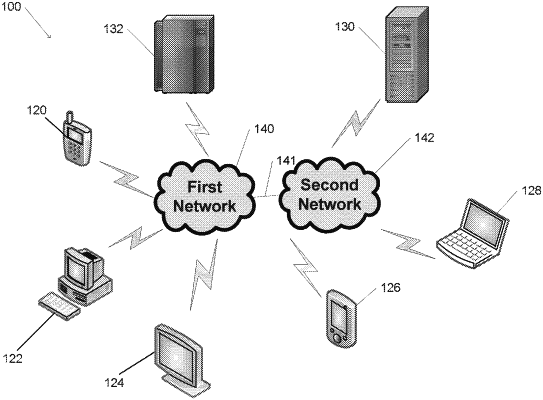| CPC H04W 48/18 (2013.01) [H04W 64/00 (2013.01)] | 17 Claims |

|
1. A multiple network mode selection device, comprising:
a processor;
a storage device coupled to the processor and configured to store a plurality of network determination processes; and
a first radio module coupled to the processor and having an analog front end programmed to perform communication with a first radio network;
wherein the processor is configured to:
connect the first radio module to the first radio network;
select a network determination process from the plurality of network determination processes;
execute the network determination process in response to connection of the first radio module to the first radio network and in response to selection of the network determination process, wherein to execute the network determination process comprises to evaluate a predetermined condition defined by the network determination process;
determine a second radio network in response to execution of the network determination process, wherein communication with the first and second radio networks are incompatible, and wherein the first radio network and the second radio network are selected from the group consisting of a code division multiple access network (CDMA), a global system for mobile communications network (GSM), a high-speed downlink packet access network (HSDPA), an evolved high-speed packet access network (HSPA), a worldwide interoperability for microwave access network (WiMAX), and a long term evolution network (LTE);
reprogram the analog front end of the first radio module to perform communication with the second radio network in response to determination of the second radio network; and
connect the first radio module to the second radio network in response to reprogramming of the first radio module.
|